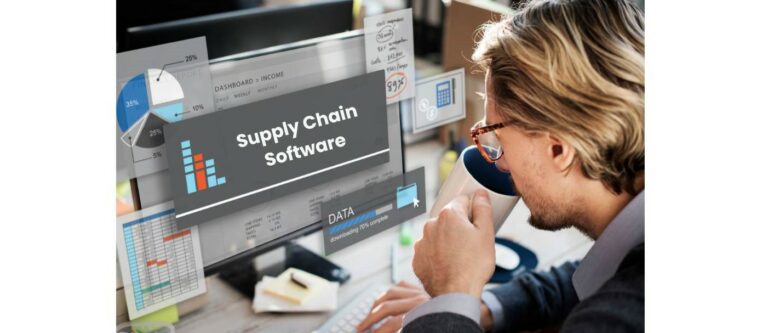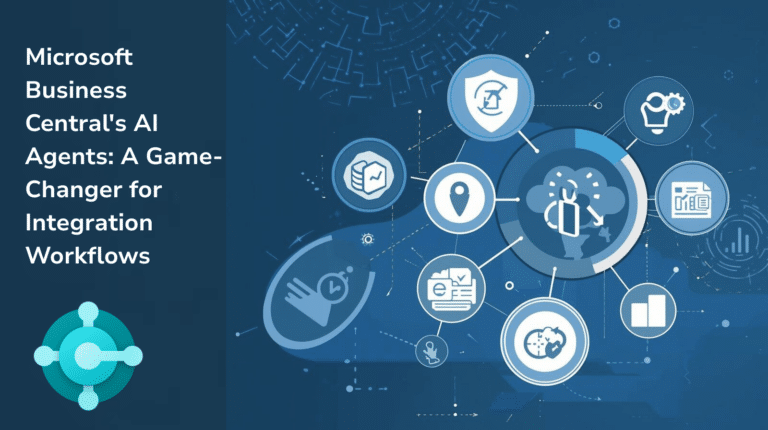The global supply chain sector is expected to witness a projected compound annual growth rate (CAGR) of 11.2% from 2020 to 2027.
In recent years, numerous businesses have been impacted by unforeseeable vulnerabilities in their supply chains. This has resulted in costly product recalls affecting industries such as consumer goods, automotive, and pharmaceuticals, with recalls running into the millions. The most concerning aspect of these disruptions is their impact on both government and private organizations, which have struggled with cybersecurity breaches and the loss of critical intellectual property due to inadequate supply chain risk management practices.

While acknowledging, assessing, and mitigating supply chain risks has always been a component of the business landscape, successfully navigating today’s market structure has become more formidable than ever. The COVID-19 pandemic unleashed waves of volatility across all markets, compelling businesses to make significant reforms in their operations, marketing strategies, and supply chain procedures.
Similarly, the ramifications of climate change, such as the Amazon Rainforest fires, have triggered a domino effect of material losses, international political conflicts, and human rights violations.
On the political front, the Ukraine-Russia war has introduced disruptions in the supply chain industry. According to a Dun & Bradstreet report, more than 374,000 global businesses rely on Russian suppliers, with 90% of them based in the US. About 241,000 businesses depend on Ukrainian suppliers, of which 93% are based in the US.
In such volatile and intricate geo-political environments, the concept of supply chain risk management has evolved. What was once centred around specific use cases has now expanded to encompass a wide range of internal, external, known, and unknown risk factors.
In 2023, supply chain executives have revaluated their sourcing strategies in response to a range of challenges, including geopolitical instability.
A sound supply chain risk management plan begins with a comprehensive understanding of the types of risks that can impact a supply chain ecosystem.
Categories of Supply Chain Risks – The Cornerstone of Supply Chain Risk Management
At the holistic level of the global supply chain, each component introduces a degree of risk that can impact your company’s performance, reputation, and financial outcomes. When these risks, whether they are external or internal, known or unknown, are left unaddressed, they have the potential to cause significant harm.
Before delving into effective supply chain risk management strategies, let’s explore the specifics of these two risk categories.

Identified and Unforeseen Supply Chain Risks
Identified risks are those that can be quantified and managed systematically over time. For instance, a supplier’s insolvency causing disruptions in the supply chain falls into this category. Similarly, risks related to cybersecurity vulnerabilities can be assessed through supply chain risk management software, which scrutinizes the IT infrastructure comprehensively.
Unforeseen risks are the ones that defy prediction. These can encompass scenarios like the unexpected eruption of a dormant volcano disrupting the supplier network or a cybersecurity attack originating deep within the firmware of an electronic component. When it comes to mitigating supply chain risks, these prove to be the most daunting challenge.
External and Internal Supply Chain Risks
KPMG forecasts ongoing disruptions in supply chain operations for the year 2023.
External supply chain risks originate from sources outside your organization. Their lack of predictability makes anticipation difficult, necessitating a greater allocation of talent, time, and resources for mitigation. Among all risk categories, external risks pose the most formidable challenges in supply chain risk analysis.
External supply chain risks encompass various types:
- Material Risk: These occur when materials or finished goods fail to reach end-users, potentially causing delays or halting operations for goods resellers.
- Demand Risk: Poorly defined demand calculations can lead to excess product production or, conversely, inadequate product availability to meet demand.
- Business Risk: These stem from changes in supplier organization structures, unexpected sales to other companies, and related factors.
- Environmental Risk: These result from socio-political issues, climate-related concerns, and global health crises, often leading to significant disruptions at vulnerable points in the supply chain.
Internal supply chain risks emerge from within the organization. Due to their predictability, they can be effectively mitigated and addressed with well-defined supply chain risk management processes. Businesses must proactively manage and mitigate these risks to prevent them from materializing.
Internal supply chain risks encompass various types:
- Manufacturing Risks: These arise from the potential for disruptions in critical workflow steps or components, causing operational delays.
- Business Risks: Resulting from disruptions in personnel, reporting, management, and other essential business operations.
- Planning and Control Risks: Stem from incorrect assessments and forecasting of planned production and handling.
- Mitigation and Contingency Risks: These occur when a business lacks appropriate contingency plans to address supply chain disruptions effectively.
Now that we’ve explored the diverse spectrum of risks demanding rigorous supply chain risk management strategies, it’s time to delve into those plans and examine how instances of supply chain disruption can be minimized.
Best Practices in Supply Chain Risk Management
The worldwide logistics automation market is anticipated to achieve the highest CAGR of 12.4% in the supply chain market by the year 2026.
When addressing supply chain risk management, the solution must encompass a comprehensive and highly proactive approach. Furthermore, it should be tailored to swiftly mitigate risks almost in real-time following a disruption.
Let’s delve into a selection of supply chain assessment and mitigation strategies that we provide to our clients when they seek solutions from us.

Emphasizing Business Continuity Planning
A successful approach to supply chain risk management is not only about risk reduction but also about preparation. Safeguarding a company’s operational resilience amid supply chain disruptions is where the significance of a business continuity plan becomes apparent.
Achieving this necessitates a thorough risk assessment. Identifying various risks enables the compilation of a list of vulnerable points in the supply chain, enabling businesses to establish protocols and plans for risk mitigation. One method to tackle this is through the PPRR model, which encompasses:
- Prevention: Measures aimed at reducing and eliminating risk exposure in the supply chain.
- Preparedness: Actions geared towards establishing timely and appropriate responses.
- Response: Strategies for controlling, limiting, and minimizing the impact of supply chain disruptions.
- Recovery: Steps taken to swiftly and safely overcome disruptions.
Proactive Management of Supplier Risks
Effective supply chain risk analysis and management hinge on gaining visibility into supplier-related risks. A comprehensive supplier risk assessment is imperative to identify and mitigate risk factors stemming from supplier behavior and the intricacies of third-party relationships.
Conducting these external supply chain assessments should be an integral part of a regular supplier relationship management strategy led by a dedicated cross-functional risk management team. The findings from these assessments should inform the development of a vendor risk management program. Such a program equips your business to address a wide range of risks originating from the supplier network comprehensively. Additionally, the data can be leveraged to establish redundancies and minimize disruptions in the supply chain.
Enhance Cyber Supply Chain Risk Management
In today’s digital era, where supply chains heavily rely on modern technologies for critical business operations, cyber risks are an inevitable concern. When combined with other operational gaps within the supply chain, these cyber risks can result in significant disruptions.
The solutions to address these risks include:
- Establishing a compliance standard applicable to all third-party vendors.
- Clearly defining user roles and implementing access restrictions to the system.
- Conducting a comprehensive vendor risk assessment before entering into any contractual agreements.
- Developing a robust disaster recovery plan to respond to breaches when they occur.
- Regularly updating the company’s antivirus and firewall software solutions.
Management of Environmental Risks
During the COVID-19 crisis, 2% of merchants encountered substantial disruptions in their global supply chains.

The Covid-19 pandemic has brought to light the inherent vulnerabilities within the global supply chain network. While it may be impossible to predict environmental risks with certainty, it is crucial to establish a supply chain risk management plan to ensure the continuity of your business operations.
Several strategies can be employed to effectively manage environmental risks:
- Multisourcing: Instead of solely considering cost factors, categorize suppliers based on their potential to withstand disruptions. The approach here is akin to eBay’s, which involves sourcing from suppliers operating in multiple locations.
- Nearshoring: Seek suppliers located in close proximity to your operational center and the endpoint of your supply chain to reduce product development and delivery lead times. Although partnering with regional suppliers may entail higher costs, it can prove beneficial in mitigating potential risks.
- Establish Buffers: While it may involve additional expenses, creating a buffer is a valuable strategy, particularly during new product launches or expansions into new areas. This not only reduces climate-related environmental risks but also facilitates the stockpiling of high-demand goods.
Monitor Freight Carrier Metrics
To instill confidence among stakeholders, manufacturers must establish a reliable delivery schedule. While partnering with a top-tier freight carrier provider is essential for consistent performance, it may not always guarantee flawless outcomes.
A vital aspect of supply chain risk management involves assessing your carrier. Here are the key metrics to monitor to mitigate any potential supply chain disruptions:
- Transit Time
- Number of Stops and Their Average Duration
- Average Loading Time
- Route Optimization
- Maintenance Schedule
Develop Risk Event Models
Imagine having the ability to predict a risk event before it occurs. While current technology may not offer such capabilities, tools like predictive analysis, data science, and data modeling bring us remarkably close to achieving this feat. These advanced technologies enable the creation of models for potential risk scenarios, including worst-case scenarios.
With access to these sophisticated risk models, you can pinpoint vulnerabilities and prepare your business for potential disasters.

Invest in a Supply Chain Software Company
In the contemporary digital era, effectively addressing supply chain risks necessitates the integration of advanced analytics and artificial intelligence to complement human expertise. A crucial component of this approach is the adoption of decentralized and transparent supply chain risk management software, enhanced by technologies such as machine learning and robotic process automation.
Despite the well-acknowledged existence of risks in the realm of supply chain operations, it is concerning that some businesses have yet to implement a robust supply chain risk management software solution.
Supply chain-focused custom software development firms craft software solutions that provide an array of advantages, including:
- Mitigation of human delays and errors.
- Establishment of real-time, decentralized data management and risk monitoring across the entire supplier network.
- Streamlining data analysis, translating data into risk models, contingency plans, and process enhancement strategies.
- Automated, cloud-based backups accessible worldwide in real-time.
These benefits represent just the tip of the iceberg when it comes to what supply chain risk management software can offer. A well-conceived and skillfully executed software solution can assist in both proactive and preventative approaches to managing supply chain risks.
Closing Remarks
The expansion of the global supply chain has reached a point where it is now an irreversible facet of our economy. Correspondingly, the risks associated with global supply chains have also become an enduring reality.
Despite commencing with a market size of $50.9 billion in 2020, the global logistics automation market has the potential to expand significantly, reaching approximately $82.3 billion by 2026, driven by its robust compound annual growth rate (CAGR).
With our extensive experience in developing software solutions for supply chain risk management, we recognize the critical importance for organizations to establish robust programs capable of managing both known and unknown global supply chain challenges. The imperative for effective supply chain risk management has reached a level of urgency that necessitates not only the implementation of governance models and processes but also a profound shift in the overall mindset of business leaders.
By embracing the approaches, we have outlined here, businesses can significantly reduce the disruptions within their supply chains while unlocking the full potential of their supply chain cycles. However, it’s important to acknowledge that this transformation may present challenges. This is where digital transformation firms like Target Integration come into play. We not only assist you in upgrading your software to enhance risk responsiveness but also facilitate a cultural shift within your organization, fostering heightened awareness and diligence in managing and mitigating risks and adapting to market changes.



